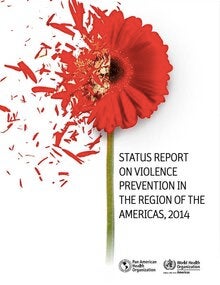In the Region of the Americas, homicide deaths due to violence are the leading cause of death for young males (Pan American Health Organization, 2012). In addition, thousands of people, primarily women and children, are victims of nonfatal violence every day. These include victims of assault who sustain physical injuries requiring treatment in emergency departments and those who suffer other physical, sexual, and psychological abuse but may not come to the attention of health or other authorities. This document presents recent information on interpersonal violence prevention in the Region of the Americas based on the Global Status Report on Violence Prevention 2014 (GSRVP, 2014), compiled by the World Health Organization (WHO), the United Nations Development Programme (UNDP), and the United Nations Office on Drugs and Crime (UNODC) (WHO/UNDP/UNODC, 2014). Interpersonal violence is violence that occurs between family members, intimate partners, friends, acquaintances, and strangers. It includes child maltreatment, youth violence, intimate partner violence, sexual violence, and elder abuse. Interpersonal violence is a risk factor for lifelong health and social problems. It is both predictable and preventable, and responsibility for addressing it clearly rests with national governments. The document provides a starting point for tracking future progress and offers a benchmark that countries can use to assess their own progress...
|

